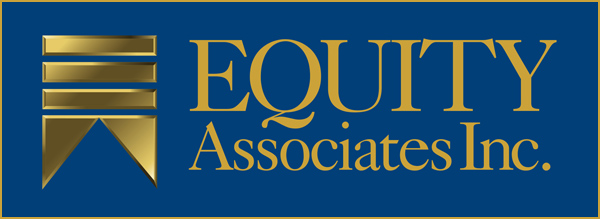Of all the registered savings accounts available to Canadians, the RESP, Registered Education Savings Plan, seems to be the most neglected. Too few Canadian families invest in RESPs; this may be because RESPs are not fully understood.
Investing in the education of your children should be a priority. Having a post-secondary education means they’re less likely to be unemployed, and their income will typically be considerably higher than someone with a high school education or less. We all want our children to have the best in life.
Investing in an RESP should be a no-brainer. Here are nine reasons why:
1. Free government money
You can contribute up to a lifetime maximum of $50,000, for each of your children. The government’s Canada Education Savings Grant will contribute an additional 20% to the account, up to a maximum of $500 per year, to a maximum total of $7,200.
For lower-income families, the Canada Learning Bond contributes up to $2,000 to an eligible child’s RESP, with no personal contributions required. Eligibility depends on the number of children in the family and the family’s income.
2. Tax-deferred growth
All of the growth within your RESP (interest, capital gains, dividends) is tax deferred for as long as the money remains in the plan (tax is only payable when funds are withdrawn).
3. The money can be spent on a wide variety of educational institutions
RESPs are not designed only for students going to university. They can also be used to help pay costs for students attending colleges, CEGEPs, trade schools and apprenticeship programs.
4. RESP withdrawals may cover more than just tuition
Once your child has enrolled for post-secondary education, and they show proof of enrolment, they can withdraw from their RESP using educational assistance payments (EAPs).
Initially, as full-time students, they can withdraw $8,000 from their RESP, until they have completed 13 weeks of their course, after which there are no specific dollar limits. The money can be used to pay for tuition, books, housing, transportation and anything reasonable that contributes to their education.
5. Withdrawals are taxed at your children’s tax bracket
The income for RESP withdrawals will be added to your child’s tax returns, not yours. However, because post-secondary students don’t usually earn a great deal, the tax could be minimal or none at all. This is one of the best benefits of RESPs: it could work out to be completely tax-free growth, if your child has little or no other income.
As well as taking advantage of these RESP tax benefits, your children could also use non-refundable tax credits to offset their RESP income. These include tax credits for tuition fees, exam fees and moving expenses (if they moved away to study).
6. If your child does not pursue post-secondary education all is not lost
An RESP can stay open for up to 36 years, and if your child doesn’t go on to post-secondary education, once they reach 21, there are a number of ways to access the money:
-
- In most cases, you can transfer your contributions to one of your other children.
- You may be able to transfer up to $50,000, on a tax-deferred basis, to your RRSP, Registered Retirement Savings Plan, if your RRSP has sufficient contribution room.
- You can close the RESP and redeem your contributions, tax-free. Grants and bonds have to be returned to the government. You get to keep the investment earnings if the RESP has been open for at least 10 years and your child isn’t in post-secondary education.
- If your child (the beneficiary) receives the Disability Tax Credit, you may be able to switch the savings over to an RDSP, Registered Disability savings Plan.
7. RESP investment options
As with other registered savings accounts, such as RRSPs and TFSAs, Tax-Free Savings Account, you can hold a wide variety of investments in your RESP.
Mutual funds, stocks and bonds, ETFs, exchange-traded funds, and GICs, guaranteed investment certificates, are just some of the investment options you can choose from. Your investments could be in your RESP for as long as 18 years or longer before the money is needed, so you have lots of time to pursue long-term compound growth.
8. Anyone can set up and contribute to a child’s RESP
Parents, grandparents, great-grandparents, aunts and uncles, anyone can set up and contribute to an RESP. They just need to designate your child is the named beneficiary. You could also ask friends and family for cash gifts at birthdays and other special occasions to be added to your child’s RESP.
9. Monthly RESP contributions are a great way to go
You can arrange for automatic monthly deposits to go from your chequing account directly into your child’s RESP. Set the amount and the day of the month you want, and the rest is done for you, automatically. It’s a great way to be sure your child’s RESP will grow, without you having to even think about it. What’s more, investing monthly can lower your investment risk and increase your investment return with the benefits of Dollar Cost Averaging.
To ensure you are getting the most from your RESP gain from professional assistance, two ways:
- A professional Financial Advisor, who is also a Certified Financial Planner® professional, can make sure you follow the regulations and procedures correctly. And he/she can help you get your investment strategy right. It’s been proven that investors who have a financial advisor experience a higher annual rate of return over the long term, compared to investors with no advisor. An advisor can help you start off by investing your RESP savings in high growth assets in the early years (such as mutual funds or ETFs) to help your savings grow more rapidly, and then switch your investments over to safer, less volatile assets, such as government bonds, as your child approaches 18 and is close to needing the money for their studies. They can also make sure that your RESP’s goals mesh with your overall financial plan.
- A professional Portfolio Manager can make sure your investments are high quality, not high risk. You can have your investments professionally managed by investing in Mutual Funds, ETFs, Managed Portfolios, or Private Investment Pools. We can help you select what’s right for you.
Book an appointment with us and let us help you set up an RESP that’s easy, stress-free and efficient at building the savings your children will need to pay for their post-secondary education.

